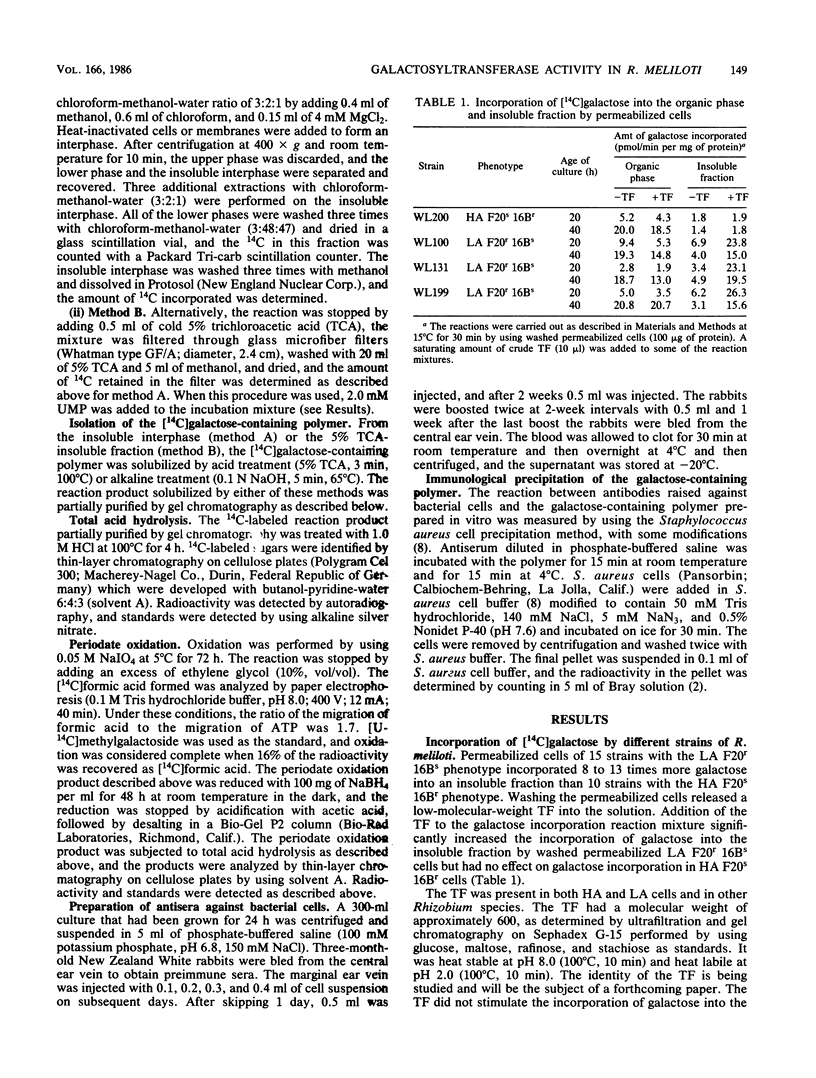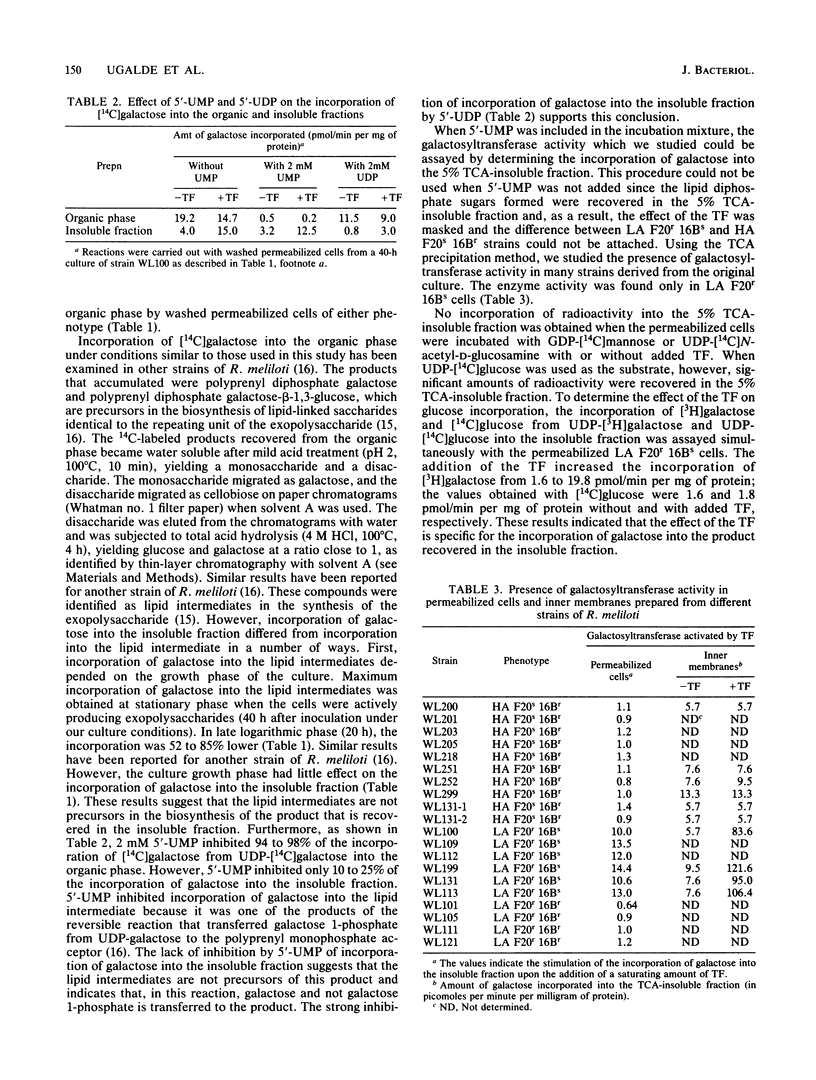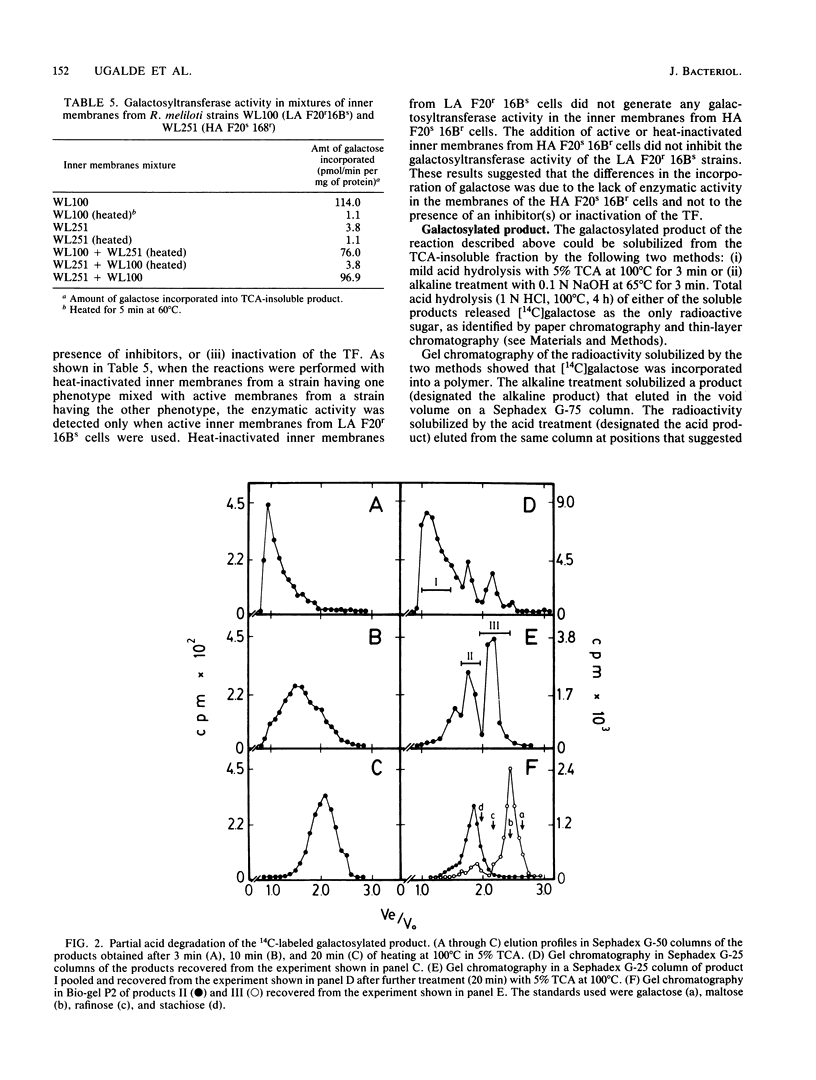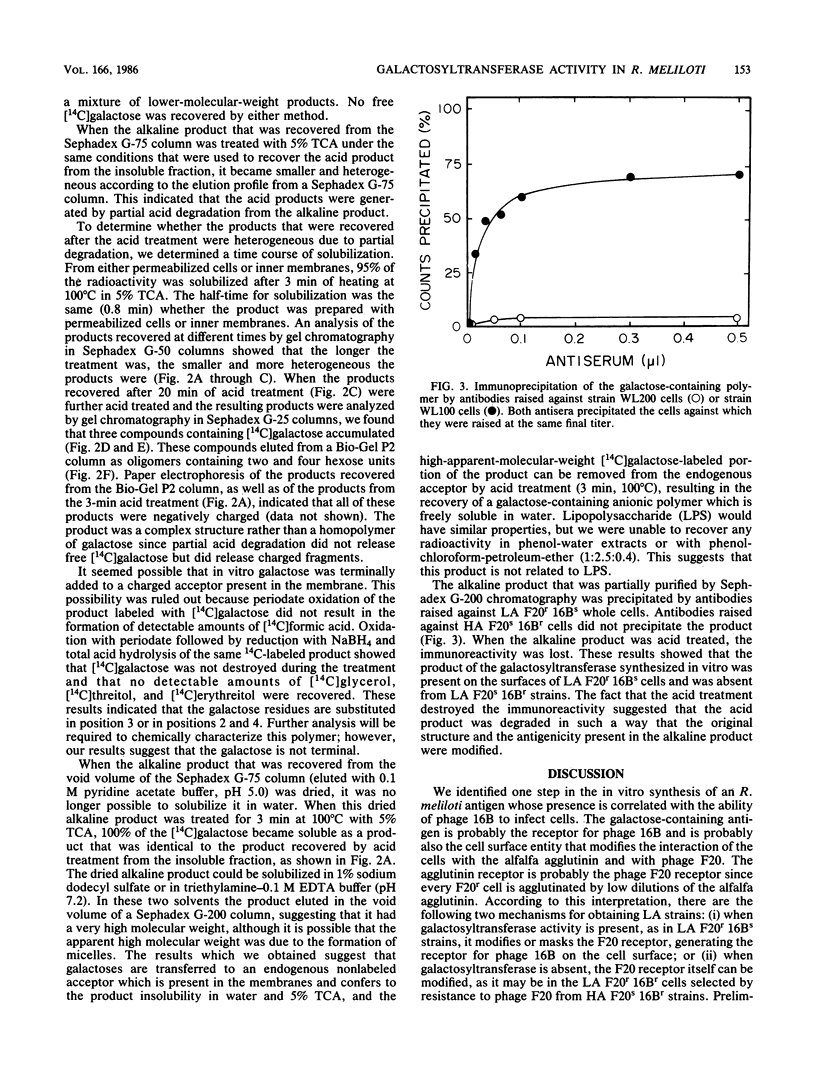Abstract
A stock culture of Rhizobium meliloti 102F51 contains colonies of two distinct phenotypes (Handelsman et al., J. Bacteriol. 157:703-707, 1984); one colony type is agglutinated by high dilutions of the alfalfa agglutinin, is sensitive to phage F20, and is resistant to phage 16B, and the other is agglutinated only by low dilutions of the alfalfa agglutinin, is resistant to phage F20, and is sensitive to phage 16B. Cells of the latter phenotype have an inner-membrane-bound galactosyltransferase activity that transfers galactose from UDP-galactose to a water-insoluble anionic polymer. This enzymatic activity is absent in cells of the first phenotype. All of the phage 16B-resistant mutants selected from a sensitive strain were agglutinated by high dilutions of the alfalfa agglutinin, were sensitive to phage F20, and lacked galactosyltransferase activity. The galactose-containing polymer prepared in vitro was immunologically cross-reactive with the cell surface.
Full text
PDF






Selected References
These references are in PubMed. This may not be the complete list of references from this article.
- Bohlool B. B., Schmidt E. L. Lectins: a possible basis for specificity in the Rhizobium--legume root nodule symbiosis. Science. 1974 Jul 19;185(4147):269–271. doi: 10.1126/science.185.4147.269. [DOI] [PubMed] [Google Scholar]
- Dazzo F. B., Hubbell D. H. Antigenic differences between infective and noninfective strains of Rhizobium trifolii. Appl Microbiol. 1975 Aug;30(2):172–177. doi: 10.1128/am.30.2.172-177.1975. [DOI] [PMC free article] [PubMed] [Google Scholar]
- Hamblin J., Kent S. P. Possible role of phytohaemagglutinin in Phaseolus vulgaris L. Nat New Biol. 1973 Sep 5;245(140):28–30. doi: 10.1038/newbio245028a0. [DOI] [PubMed] [Google Scholar]
- Handelsman J., Ugalde R. A., Brill W. J. Rhizobium meliloti competitiveness and the alfalfa agglutinin. J Bacteriol. 1984 Mar;157(3):703–707. doi: 10.1128/jb.157.3.703-707.1984. [DOI] [PMC free article] [PubMed] [Google Scholar]
- KLECZKOWSKA J. A study of phage-resistant mutants of Rhizobium trifolii. J Gen Microbiol. 1950 Sep;4(3):298–310. doi: 10.1099/00221287-4-3-298. [DOI] [PubMed] [Google Scholar]
- Kleczkowska J. Mutations in symbiotic effectiveness in Rhizobium trifolii caused by transforming DNA and other agents. J Gen Microbiol. 1965 Sep;40(3):377–383. doi: 10.1099/00221287-40-3-377. [DOI] [PubMed] [Google Scholar]
- Knecht D. A., Dimond R. L. Lysosomal enzymes possess a common antigenic determinant in the cellular slime mold, Dictyostelium discoideum. J Biol Chem. 1981 Apr 10;256(7):3564–3575. [PubMed] [Google Scholar]
- Osborn M. J. Biochemical characterization of mutants of Salmonella typhimurium lacking glucosyl or galactosyl lipopolysaccharide transferases. Nature. 1968 Mar 9;217(5132):957–960. doi: 10.1038/217957a0. [DOI] [PubMed] [Google Scholar]
- Osborn M. J., Munson R. Separation of the inner (cytoplasmic) and outer membranes of Gram-negative bacteria. Methods Enzymol. 1974;31:642–653. doi: 10.1016/0076-6879(74)31070-1. [DOI] [PubMed] [Google Scholar]
- Paau A. S., Leps W. T., Brill W. J. Agglutinin from Alfalfa Necessary for Binding and Nodulation by Rhizobium meliloti. Science. 1981 Sep 25;213(4515):1513–1515. doi: 10.1126/science.213.4515.1513. [DOI] [PubMed] [Google Scholar]
- Tolmasky M. E., Staneloni R. J., Leloir L. F. Lipid-bound saccharides in Rhizobium meliloti. J Biol Chem. 1982 Jun 25;257(12):6751–6757. [PubMed] [Google Scholar]
- Tolmasky M. E., Staneloni R. J., Ugalde R. A., Leloir L. F. Lipid-bound sugars in Rhizobium meliloti. Arch Biochem Biophys. 1980 Aug;203(1):358–364. doi: 10.1016/0003-9861(80)90187-3. [DOI] [PubMed] [Google Scholar]


